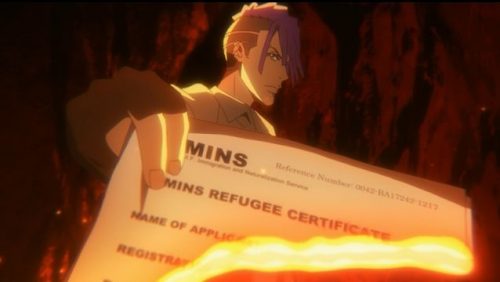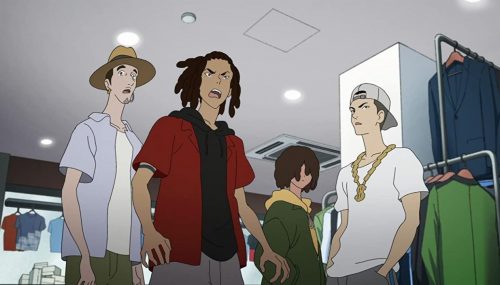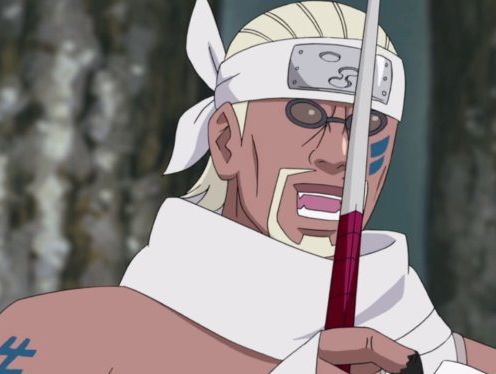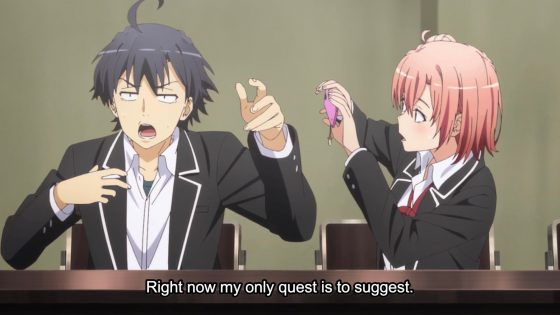Fans of the popular romantic slice of life anime Yahari Ore no Seishun Love Comedy ga Machigatteiru (Oregairu) will have been oddly bemused and surprised by Hikigaya Hachiman’s lyrical outburst in episode 7 of the currently-airing third season. The moment was so surreal and unexpected that Yuigahama Yui had to whip out her phone and document the ensuing rap battle!
This brings us to an interesting topic: the nexus between the vastly different expressions and cultures present in both mediums, with focus on the times in anime the hip-hop influence was memorable and unmistakable!
Iconic Characters

Ezekiel (Carole and Tuesday)
2019’s Carole and Tuesday is a beautiful music anime directed by the well-respected Watanabe Shinichiro, who is known for being behind major series like Cowboy Bebop and Samurai Champloo. The series has been described by some as Watanabe’s “love-letter to music”, in an ongoing relationship that is evident in every Watanabe-directed anime – the soundtrack is important. A testament to this is Cowboy Bebop’s opening, “Tank!”, by Yoko Kanno and The Seatbelts, which is always mentioned in any discussion about some of the musical brilliance in anime, but we digress.
The Carole and Tuesday character Ezekiel is a rapper whose rapping voice and two insert songs are performed by the MC and heavy anime fan, Denzel Curry. Ezekiel, and the entire musical element of Carole and Tuesday by extension, are evidence of a symbiotic relationship that can occur between anime and Hip-Hop, but also very open collaboration between prominent figures in either medium. The significance of Denzel Curry, a rapping anime fan, being the rapping voice of a Watanabe Shinichiro-directed anime work cannot be emphasised enough.
Rapper Narrators (Devilman: Crybaby)

The 2018 reboot of Nagai Go’s classic, Devilman, featured several interesting discussion points – this time, it’s the narration of the story, which often fell to the seemingly uninvolved group of characters known as Wamu’s Gang. They were Wamu, Gabi, Kukun, Babo and Hie, who have interactions with various characters in the series. They often narrate events of the series in their raps, which were a well-welcomed musical aspect in the overall grotesque nature of Devilman Crybaby. The raps are performed by the real-life artists Ken 390, Young Dais and AFRA.
Rapper Narrators (Devilman: Crybaby)

Killer Bee from Naruto is a shinobi from Kumogakure and the most recent jinchuriki of the Eight-Tails beast. As such, he has taken on the role of the village’s protector; however, he also aims to become the greatest rapper in the world. As a character, Killer Bee is one of many representations of the influence of Hip-Hop in Japan, as well as Japan’s rap scene. He raps rhymes in the middle of fights and interactions, sometimes writing lyrics in his book like an officer does infractions.
Killer Bee’s appearance and mannerisms are also very evidently inspired by his rapper identity, with his fighting style being fashioned around hip-hop dance movements.
Hip-Hop in Anime

Battlecry by Nujabes & Shing02
Samurai Champloo – or rather, “The Samurai Mixtape” is an anime by the now-defunct anime studio known as Manglobe. The studio was credited with quite a few of the classics we celebrate today; however, the significance of Samurai Champloo lies in the very strong and deliberate incorporation of hip-hop music throughout the soundtrack. The most striking incident is in the opening; a grungy aesthetic reminiscent of graffiti but swift, fluid animation dancing in stunning unison as Shing02 cuts the Nujabes instrumental with apt lyrics, “sharp like the edge of a samurai sword”. The opening is also seen as the inspiration of the opening sequence of the American animated series, The Boondocks.
Michiko Malandro (Michiko to Hatchin)
Few people are aware that yet another Manglobe-produced anime features Hip-Hop influences. The character design of the 2008 series Michiko to Hatchin (Michiko and Hatchin) is actually based on the appearance of the late singer, Aaliyah, who herself once had an animated album promotion commercial with clear anime inspiration.
Anime in Hip-Hop
Todoroki Tina
Megan Thee Stallion is a brilliant MC and an open anime fan, so much so that Crunchyroll created a beautiful anime illustration of the rapper in her “Todoroki Tina” persona, which can be visually summed up as Megan Thee Stallion cosplaying Todoroki Shoto from Boku no Hero Academia (My Hero Academia).
Similar to Denzel Curry, Megan Thee Stallion’s open love for anime is one in a long line of hip-hop artists proclaiming love for an anime title or medium itself; however, Megan Thee Stallion is a shining example of the ongoing relationship between Hip-Hop and anime.
Stronger by Kanye West
Kanye West is celebrated for his musical genius and his sonic influence on Hip-Hop. Being an anime fan himself, Kanye’s music video for his famous song Stronger makes a strong visual homage to the 1988 classic film, Akira. The most striking shots include various shots of futuristic motorcycles and neon reds, as well as the Tetsuo hospital scene with Kanye assuming the role of Tetsuo at this juncture in the music video. This particular homage is special because like Akira, Kanye West has had an immense influence on his medium of choice.
Final Thoughts

Hip-Hop and anime have the common trait of being global phenomena. Both mediums have emerged as divergent or niche but have quickly assumed a mainstream presence in their respective contexts. Their collaboration and resultant symbiosis is an interesting and exciting dynamic, and it will continue to morph and change, giving rise to even more moments like 8man going 8 Mile in Oregairu! What are some of your favourite anime/hip-hop mashup moments? Drop a comment below and tell us about it!

